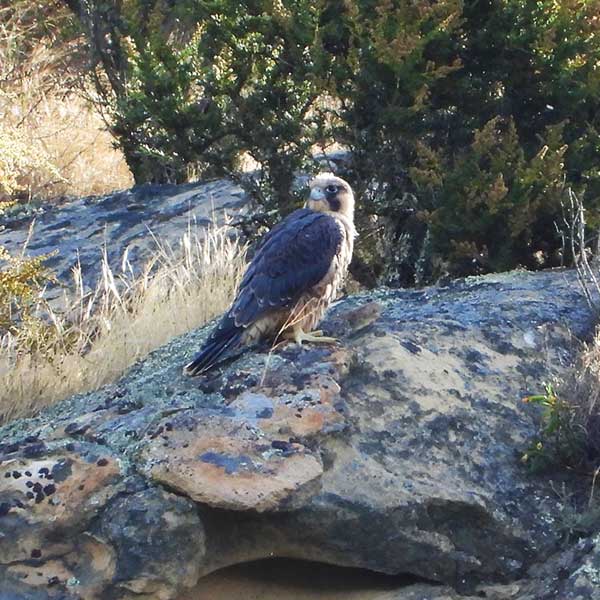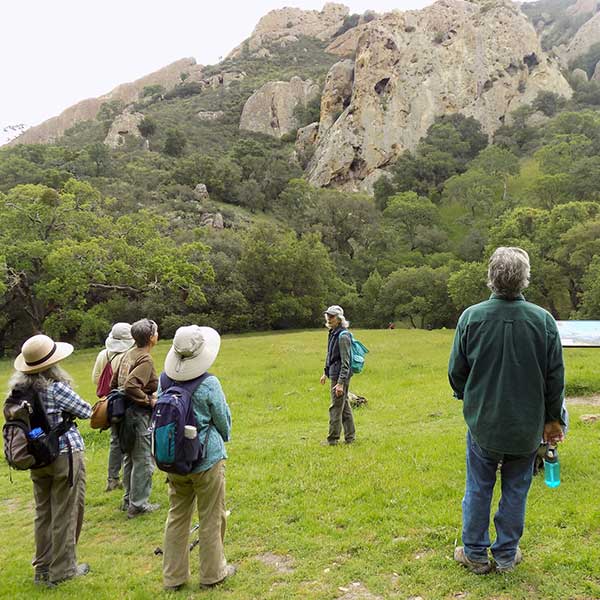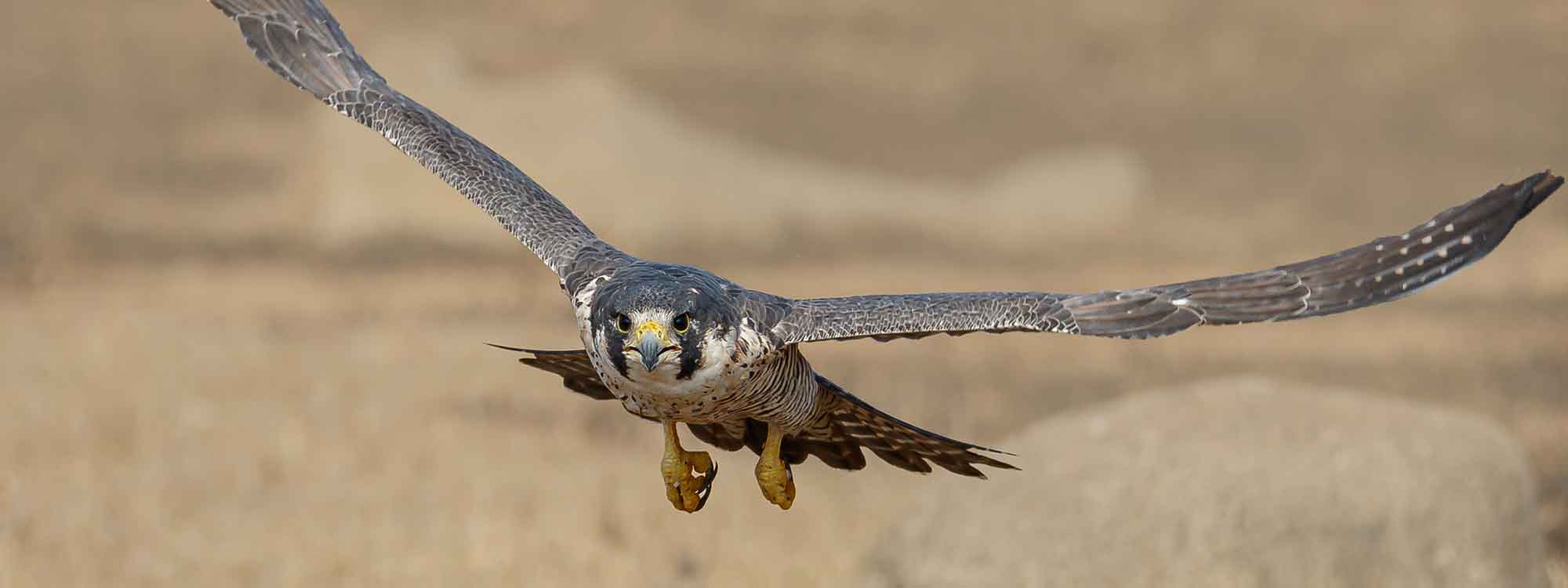By Staci Hobbet
The fastest animal on earth is a near-neighbor of yours, the peregrine falcon, a bird clocked at well over 200 miles per hour during its precipitous dives while hunting. Address? That’s easier to answer in reverse: Where doesn’t it live? Everywhere but Antarctica. Only fifty years ago, driven by the pesticide DDT, this death-defying speed demon was plummeting toward extinction, the death of an entire species.

Thanks to a global restoration effort that has extended from the Sixties on, Peregrine numbers are almost back to pre-DDT days, and this bird-eating falcon seems to be thriving in the Bay Area, where they nest in the most inaccessible places they can find—inaccessible to humans, that is. They choose electrical towers, church spires, bridges, quarries, and cliffs. Two nesting sites in the East Bay mark extremes: A very urban pair makes the Campanile its home, the tall white bell tower on the UC Berkeley campus; and another pair claim the dizzying sandstone pinnacles on the remote western edge of Mount Diablo State Park.
On Mount Diablo, there’s a new worry, not poison but soaring numbers of park visitors. In the early spring and summer, when the birds most need privacy and solitude to raise their young, a fraught endeavor at any time and place for any species, people emerge from their winter isolation and hit the trails with eager energy. The pinnacles of Castle Rock can deliver a thrill. Tucked away among long, steep ranges of cloaking chaparral on the western flanks of Mount Diablo, the cliffs emerge slowly and tantalizingly before the eyes of a hiker, and with the power of a tractor beam. Visitors look up at that jagged spine, exultation rising within them, and say, “I must go up.” They roar to the top, dazzled and happy, and stay for picnics, parties, and intricate exploration.
None intend to harm the birds—most don’t even know of their existence—but the opposite isn’t true. Ever vigilant, and with Superman vision, Peregrines keep track of everything bigger than a blade of grass for a mile around, and they do not abide intrusions, even from other birds of prey. Humans bumbling around the rocks and into the cavities pose an existential threat to them. Early in the season, under pressure from intruders—human or otherwise—they may abandon their nest.

There’s definitely some good news here, however. In 2015, an official, annual nesting closure zone was established, stretching from February 1st through July 31st, overseen by the East Bay Regional Park District and Mount Diablo State Park. That same year, a band of trained volunteers known as the Peregrine Team, formed to help the parks monitor the no-trespassing zone, and educate park visitors about the natural history of the area and the Peregrines.
For every year 2015-2019, trespasser numbers fell, but the Coronavirus-19 pandemic and lockdown reversed the trend in a big way. With literally nowhere else to go, Bay Area residents are swamping the parks. On one notable weekend early in the lockdown, Peregrine Team members spotted more than twenty trespassers near the nest in a two-hour period. So concerning was the problem that the P-Teamers put in nearly 500 hours in April alone to watch the birds and direct climbers away from the nesting zone.
How this nesting season at Castle Rock will conclude is anyone’s guess. While the UC Berkeley Campanile’s three fat chicks begin to sprout flight feathers, the Castle Rock adults are still tooling around, just beginning to incubate their eggs. The present has evolved as a critical time to keep human disturbance low. Summer is, at best, a marginal time to raise babies: it’s hot up in those unforgiving rocks, the creeks go completely dry, and the heady spring food supply diminishes.
But the falcons won’t be hurried. For whatever reason, the press of people and intruding Peregrine in the rocks, or something else we can’t divine, they are biding their time.
Staci Hobbet is a New York Times reviewed author. We are fortunate that she is a Greenbelt Alliance Outings leader. Staci is also the lead for the Peregrine Team in Pine Canyon and a natural history docent at Mount Diablo State Park.
Header Photo: Hari K Patibanda via Flickr





